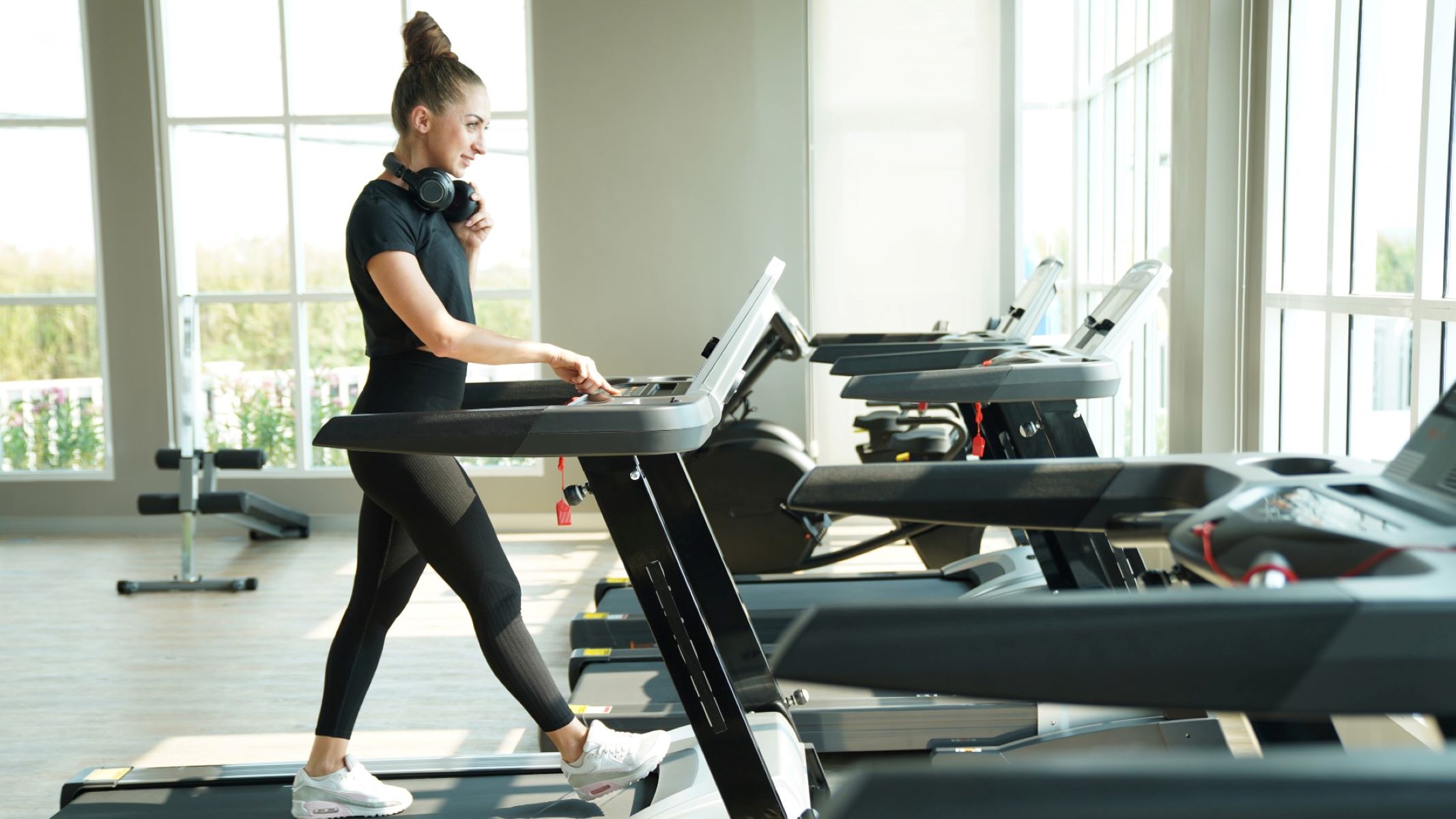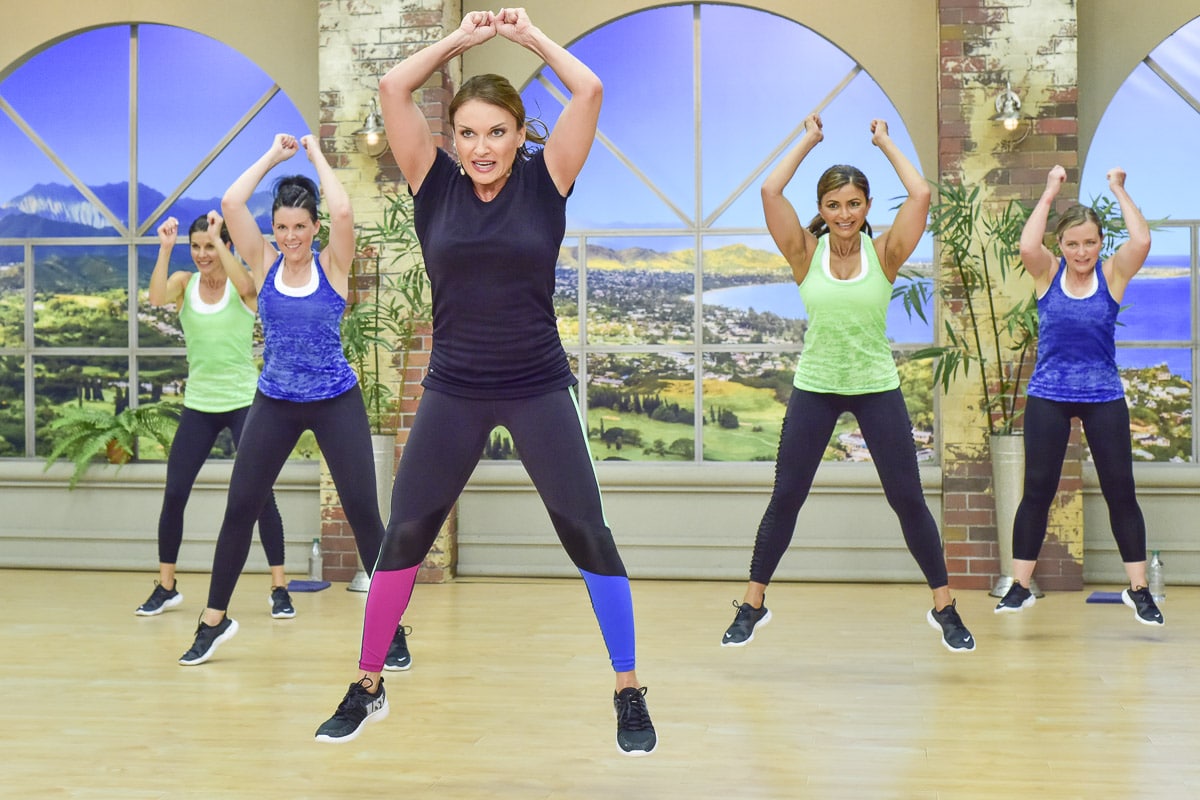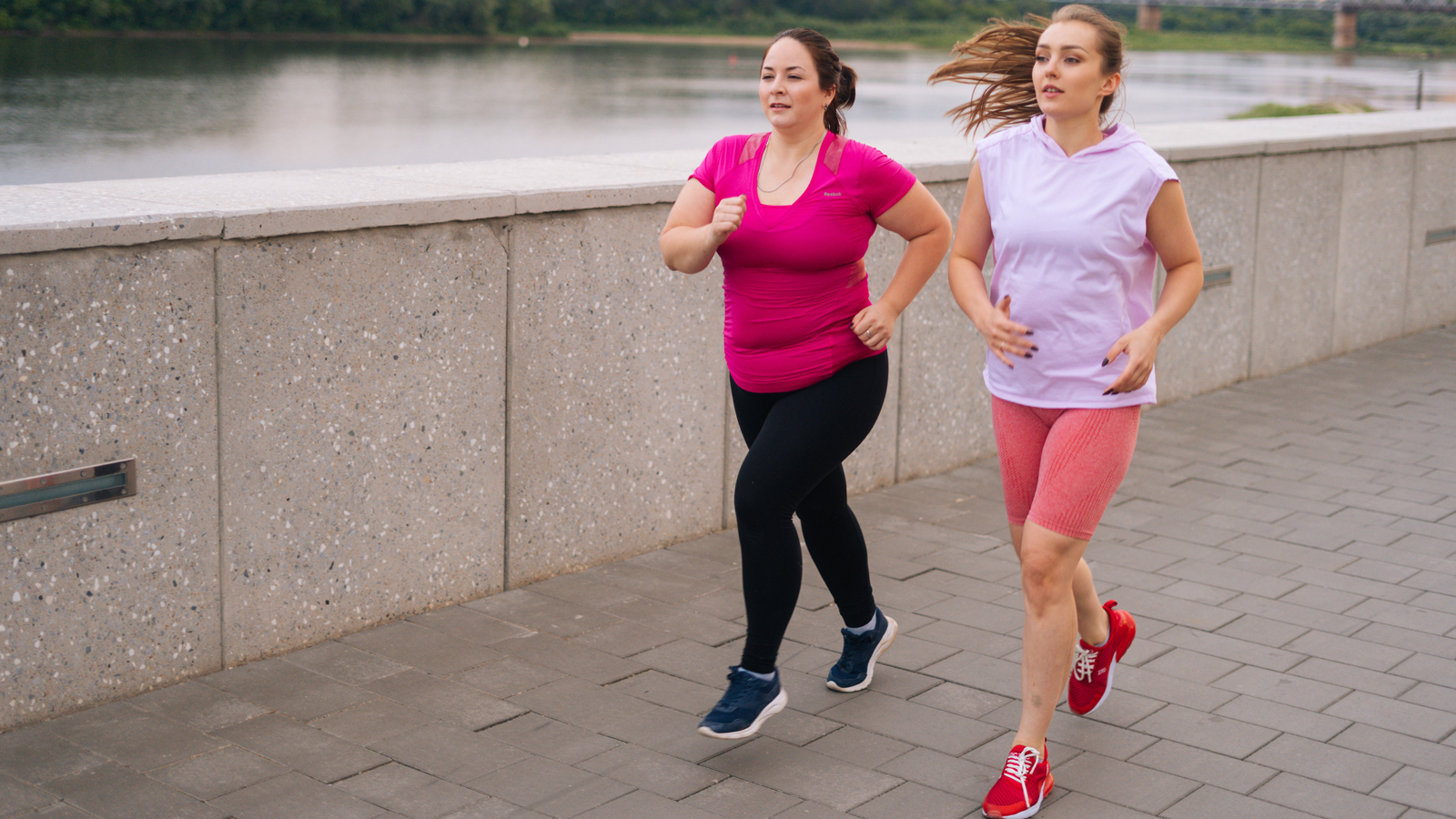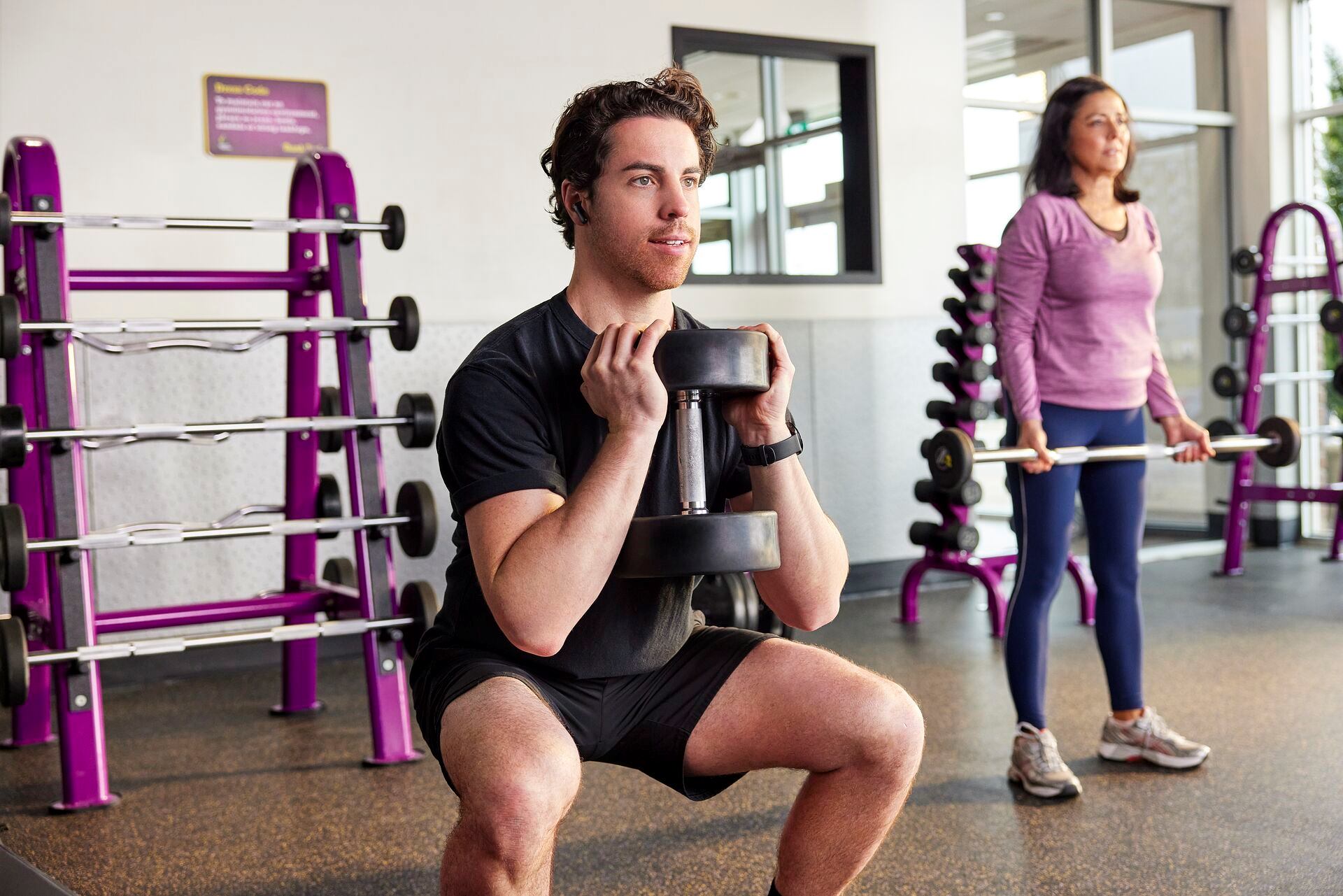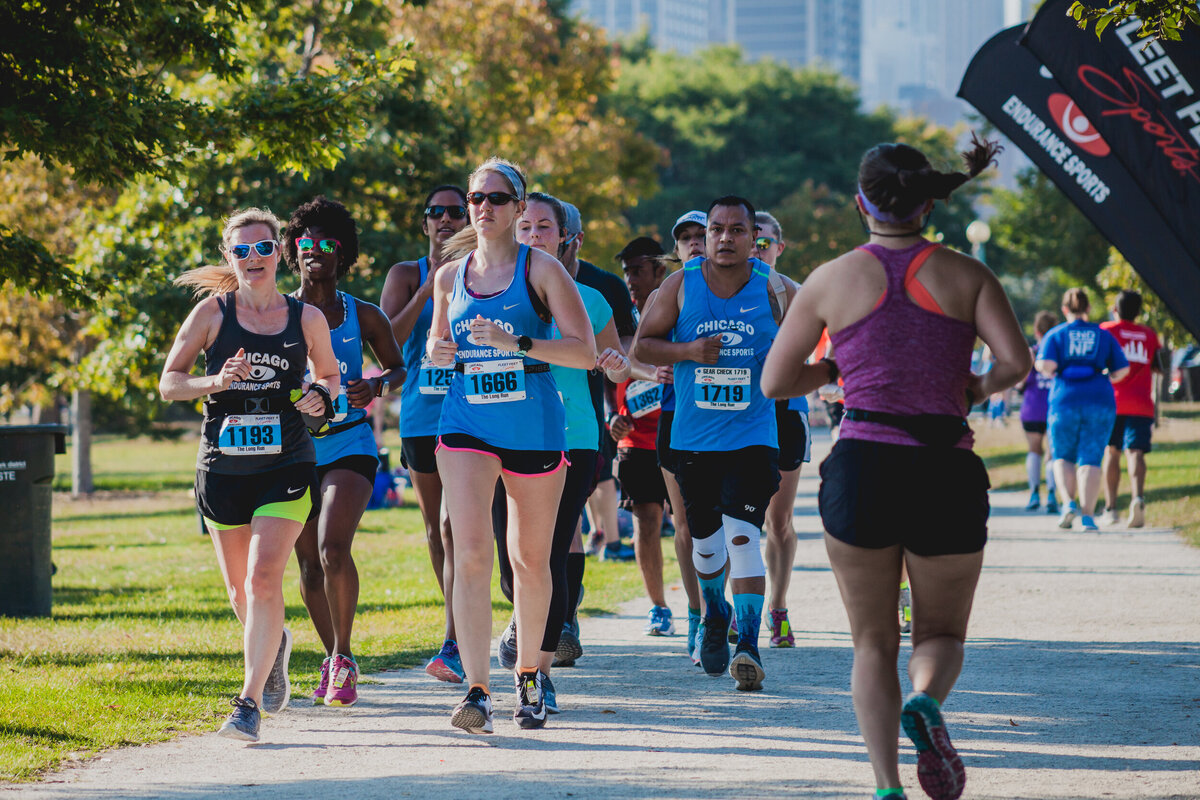Home>Misc>Featured>Why Does High Intensity Interval Training Burn Fat


Featured
Why Does High Intensity Interval Training Burn Fat
Modified: October 3, 2023
Discover the secret to losing fat with the Featured High Intensity Interval Training. Maximize your workout and achieve your weight loss goals faster than ever before.
Introduction
Are you looking for an effective and time-efficient way to lose fat and get in shape? Look no further than High-Intensity Interval Training, or HIIT. This popular workout method has gained immense popularity in recent years due to its ability to burn calories and torch fat in a shorter amount of time compared to traditional steady-state cardio.
HIIT involves alternating short bursts of intense exercise with brief periods of rest or lower-intensity activity. It can be performed with a variety of exercises, such as running, cycling, jumping jacks, or bodyweight exercises. The intense bursts of activity push your body to its limits, elevating your heart rate and metabolism while maximizing calorie burn and fat loss.
The concept of HIIT is rooted in the principle of metabolic adaptation. Research has shown that short, intense bursts of exercise can stimulate your body’s metabolic rate and increase post-workout calorie expenditure. This means that even after you finish your HIIT workout, your body continues to burn calories at an elevated rate for hours.
What sets HIIT apart from traditional cardio workouts is its efficiency. With HIIT, you can achieve comparable or even better results in less time. A 20-30 minute HIIT session can yield similar benefits as an hour-long moderate-intensity cardio workout. This makes it a great option for busy individuals who struggle to find time for lengthy exercise sessions.
Additionally, HIIT has been shown to be particularly effective at targeting stubborn fat, especially around the midsection. The intense bursts of activity activate different energy systems of the body, leading to greater fat oxidation. This means that with regular HIIT workouts, you can expect to see a reduction in overall body fat and a more toned and defined physique.
In this article, we will delve deeper into the science behind HIIT and its effects on fat loss. We will explore the many benefits of HIIT workouts for fat burning and provide some example workouts that you can incorporate into your fitness routine. Whether you are a beginner or a seasoned fitness enthusiast, there are ways to customize HIIT to fit your fitness level and goals.
What is High-Intensity Interval Training (HIIT)?
High-Intensity Interval Training (HIIT) is a type of workout that involves alternating between short, intense bursts of exercise and periods of low-intensity recovery or rest. It is a form of cardiovascular training that challenges both your aerobic and anaerobic energy systems, making it an efficient way to improve cardiovascular fitness while also promoting fat loss.
The key principle of HIIT is to push your body to its maximum capacity during the high-intensity intervals, followed by brief periods of rest or active recovery. These intervals can range from as short as 20 seconds to as long as 2 minutes, depending on your fitness level and the specific workout you choose.
During the high-intensity intervals, you should aim to push yourself to your maximum effort level, reaching about 80-95% of your maximum heart rate. This level of exertion should feel challenging and make it difficult to carry on a conversation. The purpose of these intense intervals is to elevate your heart rate, increase calorie burn, and stimulate fat loss.
The low-intensity recovery periods allow your heart rate to come down, giving your body a brief chance to recover before the next intense interval. The duration of these recovery periods can vary, but they typically range from 10 seconds to one minute.
One of the great things about HIIT is its versatility. It can be done with a wide range of exercises, including running, cycling, rowing, bodyweight exercises, and even swimming. This flexibility allows you to choose exercises that you enjoy and that align with your fitness goals.
For example, a HIIT workout on a treadmill might involve alternating between 30 seconds of all-out sprints and 60 seconds of walking or jogging. In contrast, a HIIT workout at home could consist of 40 seconds of bodyweight squats followed by 20 seconds of rest, repeated for several rounds.
HIIT is a time-efficient workout option that can be completed in as little as 15-30 minutes. Due to its high intensity, it stimulates both aerobic and anaerobic systems, providing a more complete cardiovascular workout compared to steady-state cardio exercises like jogging or cycling at a moderate pace.
Next, we will explore how HIIT actually works to promote fat loss and improve overall fitness.
How Does High-Intensity Interval Training (HIIT) Work?
High-Intensity Interval Training (HIIT) works by leveraging the body’s physiological response to intense exercise to promote fat loss and improve overall fitness. These intense bursts of activity push your body to its limits, creating a stimulus that triggers several beneficial adaptations.
During high-intensity intervals, your body relies heavily on fast-twitch muscle fibers and anaerobic energy systems to meet the increased demand for energy. This leads to a rapid increase in heart rate, oxygen consumption, and calorie burn. The intense effort and the subsequent increase in metabolic rate result in the body continuing to burn calories even after the workout is finished – a process known as excess post-exercise oxygen consumption (EPOC).
EPOC refers to the increased rate of oxygen intake and calorie expenditure that occurs after exercise as your body works to restore itself to its pre-exercise state. This means that even after your HIIT workout, your body continues to burn calories at a higher rate than it would during steady-state cardio.
HIIT engages both aerobic and anaerobic energy systems, which helps to improve cardiovascular endurance. The intense intervals push your aerobic capacity, while the brief rest periods allow for the replenishment of energy stores and clearing of waste products. Over time, this leads to an improvement in the efficiency and capacity of both energy systems, allowing you to endure longer and more intense workouts.
Research has shown that HIIT stimulates the release of growth factors and hormones that promote fat metabolism and muscle growth. The intense nature of HIIT prompts the body to release higher amounts of growth hormone and catecholamines, hormones that play a crucial role in mobilizing stored fat for energy.
In addition to fat loss, HIIT has also been shown to have favorable effects on insulin sensitivity and glucose metabolism. The high-intensity intervals can improve insulin sensitivity, which is beneficial for individuals at risk of or with type 2 diabetes. It also helps to improve the body’s ability to use carbohydrates effectively for energy, reducing the risk of blood sugar imbalances.
Overall, the combination of elevated calorie burn, increased metabolic rate, improved cardiovascular fitness, and hormonal responses make HIIT an effective method for fat loss. By challenging your body with intense bursts of activity, you can maximize your calorie burn and achieve results more efficiently than with steady-state cardio exercises.
In the next section, we will explore the science behind HIIT and its specific effects on fat loss.
The Science Behind HIIT and Fat Loss
The effectiveness of High-Intensity Interval Training (HIIT) for fat loss is backed by scientific research. Several studies have investigated the physiological mechanisms behind HIIT’s ability to promote fat loss and have provided compelling evidence for its effectiveness.
One of the key factors contributing to HIIT’s fat-burning capabilities is the concept of excess post-exercise oxygen consumption (EPOC). EPOC refers to the increased rate of oxygen intake and calorie expenditure that occurs after exercise as your body works to restore itself to its pre-exercise state.
During HIIT, the intense bursts of activity create a significant oxygen debt, causing your body to work harder to restore its oxygen levels and recover. This results in the body burning more calories post-workout than it would after steady-state cardio. Research has shown that the EPOC effect can last for up to 24 hours after a HIIT session, leading to an increased overall calorie burn.
Furthermore, HIIT has been found to have a positive impact on fat metabolism. Studies have shown that HIIT increases the secretion of hormones such as growth hormone and catecholamines, which stimulate the breakdown of stored fat for energy. This leads to an increased mobilization and utilization of fat during and after HIIT workouts, ultimately contributing to fat loss.
HIIT also promotes muscle growth and maintenance, which is essential for long-term fat loss. The intense nature of HIIT stimulates the release of anabolic hormones like testosterone, which play a crucial role in muscle development. By preserving and building lean muscle mass, your body becomes more efficient at burning calories even at rest, further supporting fat loss.
Moreover, HIIT has been shown to improve insulin sensitivity. Insulin resistance is a common issue among individuals with overweight or obesity, and it can hinder fat loss efforts. Studies have demonstrated that HIIT can improve insulin sensitivity, effectively enhancing the body’s ability to metabolize glucose and utilize carbohydrates for energy.
The intensity and variability of HIIT workouts also contribute to the phenomenon of “metabolic confusion.” Unlike traditional steady-state cardio, which often leads to adaptation and plateau, HIIT challenges the body with diverse exercises and intensity levels. This constant variation keeps the body from adapting to a specific routine, ensuring continuous progress in fat loss and fitness levels.
Additionally, HIIT has been shown to have a positive impact on cardiovascular health. The intense intervals stress the cardiovascular system, increasing heart rate and cardiac output. This leads to improvements in aerobic capacity, lower resting heart rate, and improved overall cardiovascular fitness.
As with any form of exercise, individual factors such as diet, genetics, and overall lifestyle must also be taken into consideration. While HIIT is highly effective for fat loss, it should be part of a comprehensive approach that includes a balanced diet and other healthy lifestyle habits.
In the following sections, we will explore the specific benefits of HIIT for fat loss and provide some example workouts that you can incorporate into your fitness routine.
Benefits of High-Intensity Interval Training (HIIT) for Fat Loss
High-Intensity Interval Training (HIIT) offers numerous benefits when it comes to fat loss. Let’s explore the specific advantages that make HIIT an effective method for shedding excess body fat.
1. Increased Caloric Burn: During HIIT, your heart rate and metabolism are elevated, leading to a higher calorie burn compared to steady-state cardio. The intense bursts of activity stimulate fat oxidation, allowing you to burn more calories both during and after the workout.
2. Time Efficiency: HIIT workouts are typically shorter in duration compared to traditional cardio exercises. In a 20-30 minute session, you can achieve comparable or even greater results than an hour-long steady-state cardio session. This makes HIIT a time-efficient option for individuals with busy schedules.
3. Preserves Lean Muscle Mass: One of the concerns with traditional dieting and cardio is the potential loss of muscle mass along with fat. HIIT, on the other hand, helps preserve lean muscle tissue due to its muscle-stimulating effects. This is crucial for maintaining a higher metabolic rate and achieving a toned, defined physique.
4. Increases Metabolic Rate: HIIT boosts your metabolism, not only during the workout but also for hours afterward. The intense intervals create an afterburn effect, known as excess post-exercise oxygen consumption (EPOC). This means your body continues to burn calories at an elevated rate even when you’re at rest.
5. Targets Stubborn Fat: HIIT has proven to be particularly effective at targeting stubborn fat, such as the visceral fat that accumulates around your midsection. The intense bursts of activity stimulate the release of hormones that mobilize and burn stored fat, leading to a reduction in overall body fat percentage.
6. Improves Insulin Sensitivity: HIIT workouts have been shown to improve insulin sensitivity, which is especially beneficial for individuals with insulin resistance or at risk of developing type 2 diabetes. Improved insulin sensitivity allows your body to more effectively use carbohydrates for energy, reducing the risk of weight gain and blood sugar imbalances.
7. Enhances Cardiovascular Fitness: HIIT not only burns fat but also improves cardiovascular fitness. The intense intervals challenge your heart and lungs, increasing their capacity and improving overall cardiovascular health. This can lead to a lower resting heart rate, better endurance, and reduced risk of cardiovascular diseases.
8. Versatility and Variety: There are countless ways to perform HIIT, from running and cycling to bodyweight exercises and circuit training. This versatility allows you to switch up your workouts, keeping them engaging and preventing boredom. The variety in exercises also challenges different muscle groups and energy systems, providing a well-rounded workout.
It’s important to note that while HIIT offers numerous benefits, it should be incorporated into a well-rounded fitness routine that includes strength training, flexibility exercises, and a balanced diet. Consulting with a healthcare professional or certified fitness trainer is recommended before starting any new exercise program, especially if you have any pre-existing health conditions or injuries.
In the next section, we will provide some example HIIT workouts that you can try to help you kickstart your fat loss journey.
Example HIIT Workouts for Fat Loss
High-Intensity Interval Training (HIIT) can be customized to suit different fitness levels and preferences. Here are some example HIIT workouts that you can incorporate into your routine to maximize fat loss and improve overall fitness:
1. Treadmill Sprints:
- Warm up for 5 minutes at a moderate pace.
- Sprint at maximum effort for 30 seconds.
- Recover by walking or jogging at a slow pace for 1 minute.
- Repeat the sprint-recovery cycle for a total of 10-15 minutes.
- Cool down with 5 minutes of easy jogging or walking.
2. Bodyweight Circuit:
- Perform each exercise for 30 seconds, with 15 seconds of rest in between.
- Jumping jacks
- Push-ups
- Bodyweight squats
- Mountain climbers
- Burpees
- Plank
- Repeat the circuit for 3-4 rounds.
3. Cycling Intervals:
- Start with a 5-minute warm-up at a moderate intensity.
- Cycle at maximum effort for 45 seconds.
- Reduce intensity to a comfortable pace for 1 minute.
- Repeat the high-intensity/low-intensity cycle for 15-20 minutes.
- Finish with a 5-minute cool-down at an easy pace.
4. Stair Intervals:
- Find a flight of stairs or a stair-stepping machine.
- Run or step up the stairs as quickly as possible for 30 seconds.
- Descend or step down slowly for 1 minute as your recovery.
- Repeat the stair interval for 10-15 minutes.
Remember to adjust the intensity and duration of the intervals based on your fitness level. As you progress, you can increase the duration of the intense intervals or reduce the rest periods to challenge your body further.
It’s important to warm up before each HIIT workout and cool down afterward to prevent injury and aid in recovery. Incorporating strength training and flexibility exercises into your routine can complement the fat-burning benefits of HIIT and promote overall fitness and muscle development.
Consult with a certified fitness professional to design a HIIT program tailored to your specific needs and goals. Proper form and technique are crucial for achieving maximum results and minimizing the risk of injury.
In the next section, we will discuss some tips for incorporating HIIT into your fitness routine to maximize fat loss and sustainability.
Tips for Incorporating HIIT into Your Fitness Routine
High-Intensity Interval Training (HIIT) can be a highly effective way to burn fat and improve fitness levels. Here are some tips to help you incorporate HIIT into your fitness routine successfully:
1. Start Slow and Progress Gradually: If you’re new to HIIT, start with shorter intervals and lower intensity. Allow your body to adapt gradually to the demands of HIIT and gradually increase the intensity and duration of your intervals over time.
2. Mix Up Your Workouts: Keep your routine varied and exciting by incorporating different exercises and intervals. This not only challenges your body in different ways but also prevents boredom and improves adherence to your fitness routine.
3. Balance Your Work and Rest Intervals: The work intervals should be intense but sustainable, aiming for about 80-95% of your maximum effort. Make sure to allow sufficient rest or recovery intervals to catch your breath and recover before the next high-intensity interval.
4. Schedule Adequate Recovery Time: HIIT workouts are intense, so it’s important to give your body ample time to recover between sessions. Aim for 48 hours of rest between HIIT workouts to allow your muscles to repair and adapt.
5. Listen to Your Body: Pay attention to how your body feels during and after HIIT workouts. If you experience excessive fatigue, pain, or discomfort, it’s important to scale back the intensity or take a rest day to avoid injury.
6. Incorporate Strength Training: Combine HIIT with strength training exercises to maximize fat loss and improve muscle definition. Strength training helps build lean muscle mass, which boosts your metabolism and enhances overall fat burning even at rest.
7. Prioritize Proper Form: Maintaining good form during exercises is essential for preventing injuries and maximizing the effectiveness of your HIIT workouts. Focus on proper technique and alignment to ensure safety and optimal results.
8. Adapt HIIT to Your Fitness Level: HIIT workouts can be modified to fit individual fitness levels and preferences. Adjust the intensity, duration, and frequency of your intervals to match your current fitness level and gradually progress as you become fitter and stronger.
9. Include Warm-Up and Cool-Down: Before starting a HIIT workout, warm up your body with dynamic stretches and light cardiovascular exercise. After the workout, gradually cool down with gentle movements and static stretches to promote flexibility and aid in recovery.
10. Stay Hydrated and Fuel Your Body: Stay hydrated before, during, and after your HIIT workouts to optimize performance and aid in recovery. Also, ensure you’re providing your body with adequate nutrition to support your energy needs and muscle recovery.
Remember, consistency is key with any fitness routine. Aim to incorporate HIIT workouts into your weekly schedule at least 2-3 times, allowing for rest days in between. Furthermore, consult with a healthcare professional or certified fitness trainer to ensure that HIIT is safe and suitable for your individual circumstances and fitness goals.
In the next section, we will discuss some precautions and considerations you should keep in mind before starting HIIT workouts.
Precautions and Considerations before Starting HIIT
High-Intensity Interval Training (HIIT) is an effective and efficient workout method, but it’s important to take certain precautions and considerations before incorporating it into your fitness routine. Here are some key points to keep in mind:
1. Consult with a Healthcare Professional: Before starting any new exercise program, especially if you have any pre-existing health conditions, it’s essential to consult with a healthcare professional or your primary care physician. They can assess your overall health and provide guidance on whether HIIT is safe and suitable for you.
2. Fitness Level and Readiness: HIIT can be intense and physically demanding. It’s crucial to assess your fitness level and readiness to engage in high-intensity exercise. If you’re new to fitness or haven’t been exercising regularly, it may be best to start with lower-intensity workouts and gradually work your way up to HIIT.
3. Proper Warm-Up and Cool-Down: Always include a proper warm-up and cool-down in your HIIT workouts. This helps prepare your body for the intense exercise and aids in recovery. Warm up with dynamic stretches and light cardiovascular activities, and cool down with gentle movements and static stretches to prevent muscle soreness and injury.
4. Technique and Form: Pay close attention to your technique and form during HIIT exercises. Proper form ensures that you’re targeting the desired muscle groups effectively and reduces the risk of injuries. If you’re unsure about the correct form, consider working with a certified fitness professional to ensure you’re performing the exercises correctly.
5. Gradual Progression: Start slowly and gradually increase the intensity and duration of your HIIT workouts. This allows your body to adapt to the demands of HIIT and reduces the risk of overexertion or burnout. Pushing yourself too hard or progressing too quickly can lead to injuries or excessive fatigue.
6. Listen to Your Body: It’s essential to listen to your body and respect its limits. If you experience pain, dizziness, or excessive fatigue during a HIIT workout, it’s important to stop and rest. Pushing through severe discomfort can increase the risk of injury or other health issues.
7. Recovery and Rest: HIIT workouts are demanding, and your body needs sufficient time to rest and recover between sessions. Aim for at least 48 hours of rest between HIIT workouts to allow your muscles to repair and adapt. Overtraining can lead to decreased performance, increased risk of injury, and hindered progress.
8. Individualization: HIIT workouts can be tailored to fit individual fitness levels, preferences, and limitations. Modify the exercises, intervals, and intensity to suit your capabilities and gradually progress as you become fitter and stronger. Remember, everyone’s fitness journey is unique, so don’t compare yourself to others.
9. Balanced Fitness Routine: While HIIT can be highly effective for fat loss, it’s important to have a well-rounded fitness routine. Include strength training, flexibility exercises, and steady-state cardio to achieve a balanced approach to fitness and minimize the risk of overuse injuries or imbalances in your body.
10. Enjoyment and Sustainability: Choose HIIT exercises and workouts that you enjoy and that align with your fitness goals. Consistency is key, so finding activities that you look forward to will increase the likelihood of sticking to your HIIT routine in the long run.
By being mindful of these precautions and considerations, you can ensure a safe and effective HIIT experience that maximizes your fat loss and improves your overall fitness.
In the concluding section, we will summarize the main points discussed in this article and emphasize the benefits of incorporating HIIT into your fitness routine.
Conclusion
High-Intensity Interval Training (HIIT) is a powerful and time-efficient workout method that can help you achieve significant fat loss and improve overall fitness. By incorporating short bursts of intense exercise followed by brief periods of rest or recovery, HIIT engages multiple energy systems, elevates your heart rate, and stimulates fat metabolism.
The science behind HIIT is rooted in the concepts of excess post-exercise oxygen consumption (EPOC), hormonal responses, and metabolic adaptation. HIIT workouts increase your metabolic rate, leading to a higher calorie burn both during and after exercise. They also target stubborn fat, promote muscle growth, improve insulin sensitivity, and enhance cardiovascular endurance.
There are numerous benefits to incorporating HIIT into your fitness routine. It maximizes fat loss, improves cardiovascular health, preserves lean muscle mass, and can be customized to fit different fitness levels and preferences. HIIT workouts are time-efficient, allowing you to achieve comparable or better results in less time compared to traditional steady-state cardio workouts.
When starting HIIT, it’s essential to consider your fitness level, consult with a healthcare professional if necessary, and progress gradually to avoid injury and excessive fatigue. Balancing the workload and rest intervals, maintaining proper form, and listening to your body’s cues are crucial for a safe and effective HIIT experience.
To incorporate HIIT effectively, aim for 2-3 sessions per week, allowing rest days between workouts to promote recovery. Combine HIIT with strength training, flexibility exercises, and a balanced diet to optimize your results and overall health.
Remember, everyone’s fitness journey is unique, so find enjoyment in your HIIT workouts and make them sustainable for long-term success. Whether you’re a beginner or a seasoned fitness enthusiast, HIIT can be adapted to your needs and goals.
So, if you’re looking for a time-efficient and highly effective way to burn fat, boost metabolism, and improve overall fitness, give High-Intensity Interval Training (HIIT) a try. Start gradually, listen to your body, and enjoy the benefits that HIIT can bring to your health and well-being.
